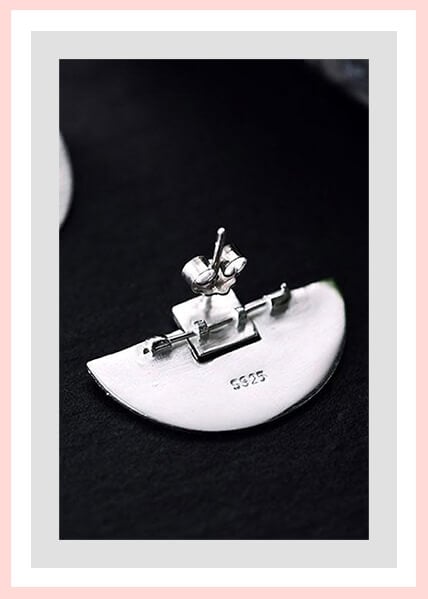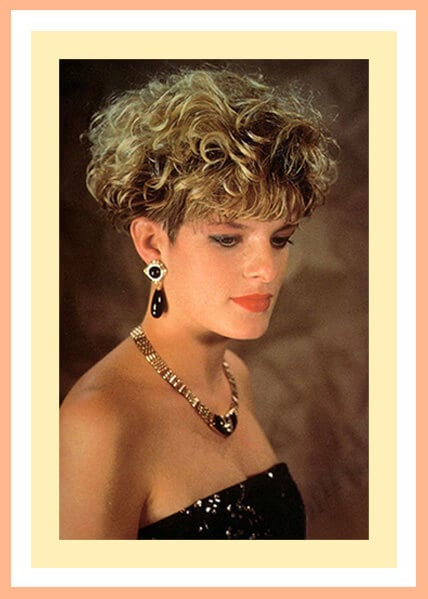Your Cart is Empty
BLACK FRIDAY SALE - UP TO 50% OFF SITEWIDE
BLACK FRIDAY SALE - UP TO 50% OFF SITEWIDE
test
A column with no settings can be used as a spacer
Link to your collections, sales and even external links
Add up to five columns
A column with no settings can be used as a spacer
Link to your collections, sales and even external links
Add up to five columns
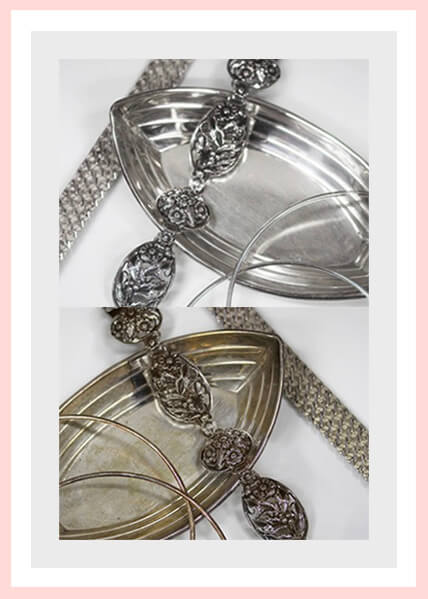
Cleaning Sterling Silver: Low-Cost Homemade Solutions
 Rehana Jewelry Metals
| Tips
Rehana Jewelry Metals
| Tips
June 7th, 2021 10 minute read
Listen to article
Audio generated by DropInBlog's Blog Voice AI™ may have slight pronunciation nuances. Learn more
Sterling silver jewelry is gorgeous but many people just leave these pieces in the jewelry box just for one reason: quick discoloration. It seems that your favorite bracelets or pair of earrings take no time to lose their patina. Why does this happen and what can you do to prevent this loss of brightness? Are there any efficient tips for cleaning sterling silver once the tarnish sets in?
Fortunately, caring for and treating the dullness of sterling silver does not break much sweat. All you need is our ultimate guide to caring for your silver piece and tips to remove the tarnish.

WHY DOES STERLING SILVER TARNISH?
Between its radiance and brilliant lacquer, sterling silver has millions of fans. The only issue that hurts that popularity a bit is its proneness to develop stains pretty quickly.
Oxidation and/or sulfurization are the reasons for silver and sterling silver to turn blackish. When oxygen or sulfur in the air or any other materials contacts the silver, a chemical reaction takes place, tarnishing the silver surface.
The other metal in most sterling silver jewelry pieces is 7.5% copper, which reacts with oxygen, moisture, and salt. Burning fossil fuels also trigger the same chemical bonding, causing the silver on the surface to turn dark.
To keep the sterling silver pieces sparkly forever, you will need to clean them often.
CLEANING STERLING SILVER: The Best Methods
Even high-grade sterling silver jewelry can appear dull over time without proper care and cleaning. Following these cleaning methods will keep your precious jewelry looking new.
1- Polish the Silver
The safest and simplest way of cleaning sterling silver is polishing. It's an efficient method for restoring a slightly discolored silver piece. There is a special cloth to polish such delicate, precious items. If you can't get this cloth, use a nonabrasive piece of cloth, such as microfiber or lint-free cotton flannel. Polishing with something like tissues or paper towels that contain fiber as it can scratch the silver.
Back-and-forth instead of circling motions are ideal for cleaning silver jewelry. Always use the clean parts of the cloth or you will re-tarnish the piece. Remember not to do vigorous rubbing as it may remove the silver plating of sterling silver jewelry. If the piece has too much decoration and hard-to-reach crevices, use Q-tips.
If the jewelry pieces are too dirty or discolored, use the following home cleaning solutions. These are cheap and don't take much of your time.
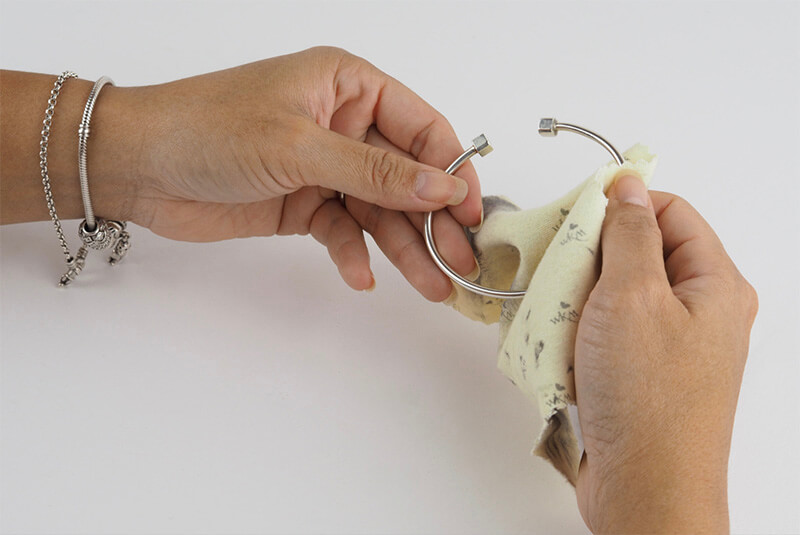
2- Use Soapy Water
Cleaning sterling silver does not take anything more than soap and lukewarm water. Just mix a few drops of mild dishwashing soap (free of ammonia and phosphate) with warm water and the cleaning solution will be ready. Baby shampoo could be a good alternative to dishwashing soap.
Stir the solution until bubbles form and soak the piece there for at least 10 minutes. When the deposits on the upper surface are completely soft, clean the surface and crevices with a soft-bristle brush. It could be a toothbrush too but the bristles have to be smooth and flexible. Silver is soft, so gentle brushing is the only way.
Rinse jewelry in warm water and dry it up with a soft cloth. This is a comparatively safer method that involves almost zero cost. However, if it does not work, you can apply the following methods.
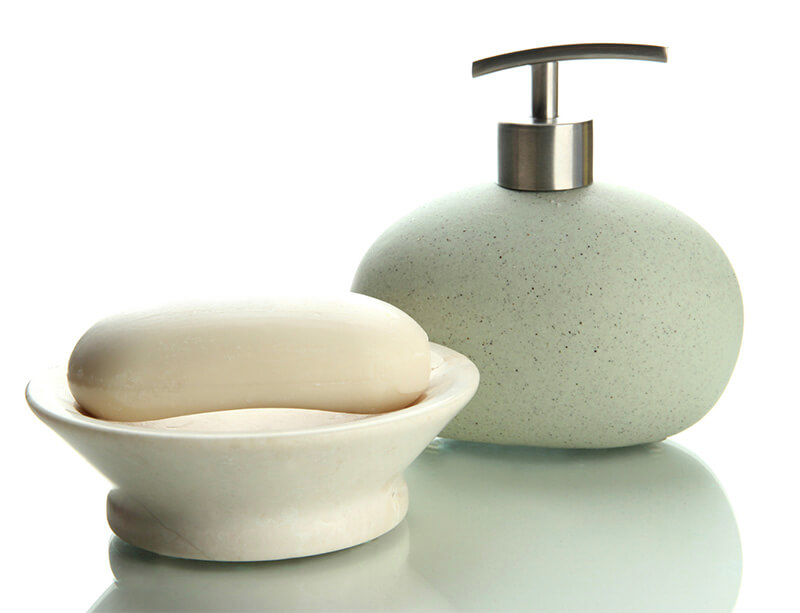
3- Use Baking Soda and Water
Pour a few drops of water on some baking soda and create a paste. Apply a small amount of that paste on your jewelry and polish it with a non-abrasive cloth. Buff in a back-and-forth motion to avoid creating scratches on the surface.
If the pieces have more details, thin out the paste and clean the crevices with a Q-tip or soft-bristled brush.
Use warm water for washing and remove the water with a soft cloth.
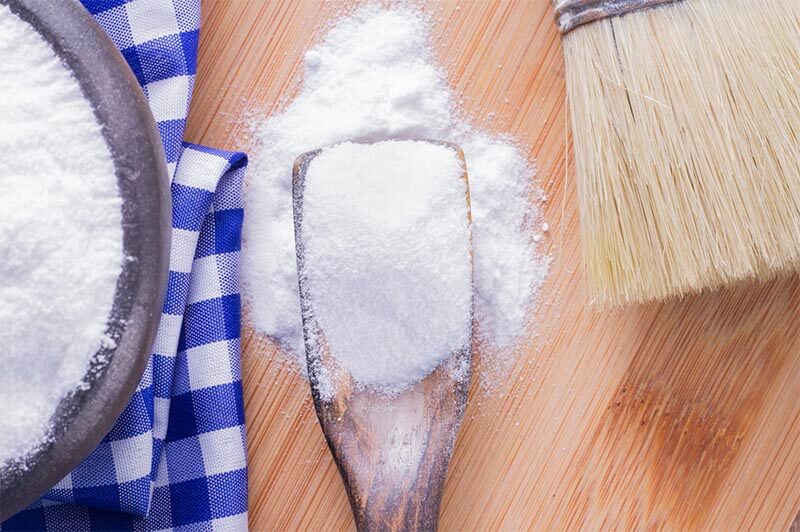
4- Use White Vinegar and Baking Soda
Baking soda is an excellent ingredient for cleaning sterling silver. You can use it with white vinegar too to restore the shine of your precious jewelry.
Mix two tablespoons of baking soda into ½ cup of white vinegar and soak the jewelry pieces into it for 2 to 3 hours. It works like magic for treating heavy discoloration.
This mixture creates bubbles but it won't create any chemical reaction with the silver. Just rinse and dry when done.
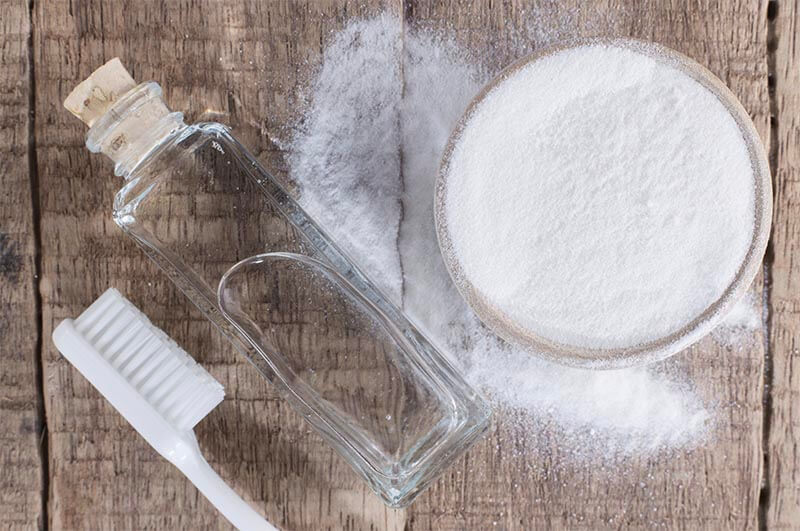
5- Use Baking Soda and Aluminum Foil
Baking soda is one of the super silver cleaners, no doubt about that. All you need for this simple homemade cleaning procedure are some baking soda, aluminum foil, salt, and boiling water.Follow these steps:
- Use aluminum foil to line a glass roasting pan. Keep the foil's shiny side facing up.
- Pour hot water onto the pan and fill up to the point where it would cover the jewelry pieces.
- Add 2 tablespoons each of kosher salt and baking soda into the water and stir well. There should not be any grain of salt or soda.
- Place the jewelry pieces in the solution. They should not touch each other or the aluminum foil. Use nitrile gloves or tongs (containing no rubber as it contains sulfur that causes tarnish in the first place) for placing the jewelry in the pan and then removing it from the water.
- Keep the pieces in the solution for around 5 to 10 minutes. If you look closely, you will see that the discoloration is slowly disappearing from the jewelry. This method is most suitable for silver rings and other small pieces with plenty of details. With other methods, it's hard to clean the tiny cracks of these pieces. However, this "soda and foil" cleaning technique will also work for bigger pieces.
- Take the jewelry pieces off the solution and rinse with cold, clean water. Dry up with a soft cloth. All of them should be glittering.
Sulfurization is one of the two main reasons for silver jewelry discoloration. It's a chemical bonding where sulfur and silver react to create silver sulfide, aka the tarnish on silver. The aluminum foil separates the sulfur from the compound; thereby, removing the tarnish.
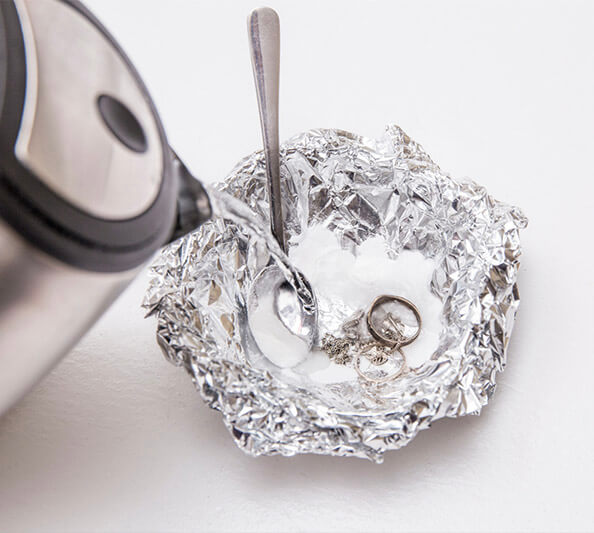
6- Use Olive Oil and Lemon Juice
Another homemade solution for cleaning sterling silver. Take half a cup of lemon juice in a bowl and mix 1 tablespoon of olive oil into it. Dip a soft microfiber towel into the mixture and wring it a little to get rid of excess water.
Use the damp cloth to rub gently on the silver jewelry. Rinse when it looks completely clean, free of all stains. Rinse and dry.
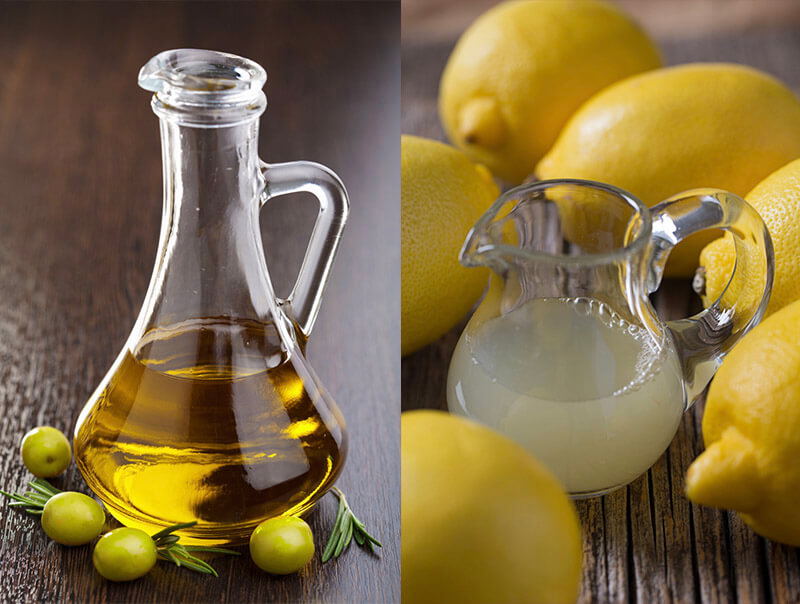
7- Use Toothpaste
We all have toothpaste in our home, right? A small amount of toothpaste can clean silver jewelry pieces and make them look new. Don't use a whitening-formula toothpaste.
Dilute the toothpaste with a few drops of water and then apply the paste to the jewelry with a soft-bristle brush. Wash and dry up when the buffing is done.
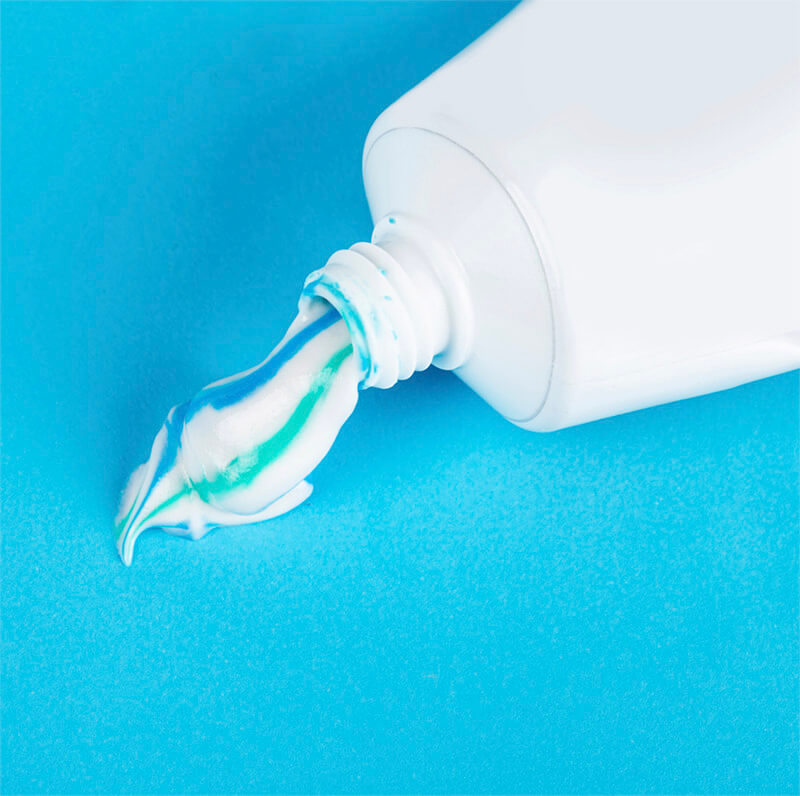
IMPORTANT TIPS FOR CLEANING CARE
These homemade solutions produce results, no doubt about that. However, you have to be careful about a few things to make sure your prized possessions don't suffer any damage. Follow these tips to ensure a safe cleaning process:
● Don't use these homemade cleaning agents if the jewelry pieces have some gemstones or pearls. The solutions are mild but can be damaging to these stones. Also, the mixture can sneak in under the stones and dislodge them.
● Whether you use a cleaning paste or liquid mixture, wash the jewelry under running water when the cleanup is done. Also, never forget to dry up with a non-abrasive cloth. Drying late can cause the formation of water stains.
● Don't use these cleaning solutions on oxidized jewelry. Clean those items with a silver polish cloth.
● Some people may prefer to use commercial silver cleaners but only professionals should handle these cleaning agents. Applying the wrong amount can erase the jewelry's patina. Also, inhaling such chemicals is bad for health. You have to follow some rules about their disposal to avoid environmental pollution.
3 TIPS FOR PREVENTING STERLING SILVER TARNISH
While cleaning sterling silver jewelry brings back its original luster, taking proper care is necessary for keeping stains and dullness at bay. Providing complete protection for silver jewelry from harmful elements — such as moisture, heat, oil, and air — is not possible. But following these tips will limit the exposure and save you from frequent cleaning work.
1- Wear Your Jewelry Often
Leaving the silver jewelry lying in your jewelry box causes more discoloration than wearing it regularly. The oils in our skin work as a natural tarnish remover. You just need to wipe them after each use to make sure the exterior surface is dry.
Frequently worn jewelry pieces need just light polishing while deep cleaning or liquid silver cleaners are more geared towards the ones that sit on the jewelry trays for ages.
2- Avoid Exposure to Harmful Elements
The other metal in sterling silver can trigger a chemical reaction with many substances. Limiting exposure to them will slow down the discoloration, which is less hassle than cleaning sterling silver. The most harmful elements are:
a. Sulfur-Containing Components
Anything that contains sulfur should be kept away from silver items. This chemical element quickly forms a chemical bond with silver and creates a dirty layer of silver sulfide on the jewelry pieces.
Plenty of household items, such as rubber gloves, wool, latex, onions, mustard, eggs, and many more, have sulfur in them.
b. Grooming Products
Many of our daily grooming products have chemical elements to tarnish silver jewelry pieces. Haircare and beauty products, such as perfumes, hair sprays, and lotions, should not come in contact with your sterling silver jewelry.
Cleaning tasks are essential to daily household chores. We need to do dishes, wash clothes, wipe the floor, and more. The problem is that most cleaning supplies contain chemical elements that can decrease the shine on the silver.
Neither water nor moisture is good for sterling silver. Keeping them in a damp place or dipping in water is like the bane of them.
Take off your silver rings, bracelets, and other silver jewelry pieces before swimming in the pool, taking a shower, or doing any other water-related chores or activities.
e. Outdoor Activities
Both sunlight and humidity can tarnish silver pieces. When you are spending time outdoors for a long time, it's better not to wear jewelry. Also, silver jewelry can be damaged if you wear them during gardening, doing exercises, or similar physical activities.
3- Store Properly
Moisture and open-air are not good news for sterling silver. So, you need to store it somewhere that limits exposure to these elements. Premium-quality anti-tarnish bags seem to be the best option. Keep them in a dark, cool place to ensure the best protection.
A soft, fabric-lined bag (free of scratching and abrasive elements) can be a nice alternative too. If it's not airtight, put silica gel or a piece of chalk inside to absorb moisture. Don't leave the bag in a humid place.
Keep each jewelry piece in separate small bags to minimize the risk of scratching.
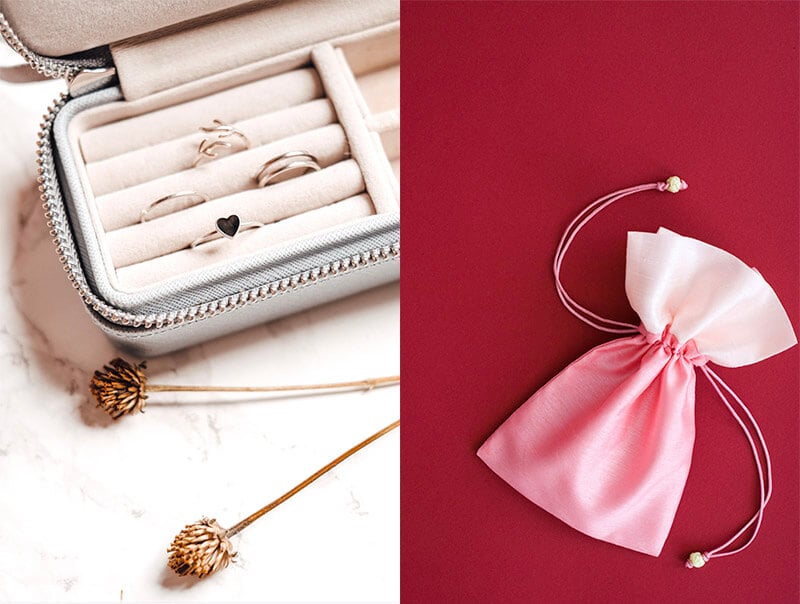
Conclusion
Cleaning sterling silver jewelry routinely will extend its lifespan by many years. By following these cleaning and care tips, these pieces can even turn into your family heirlooms, getting passed from one generation to another. Taking proper care won't let the tarnish set in. Even if it does, the cleaning methods will sure restore their original look.

Sterling Silver Iris Flower Wire Earrings by Vinty Jewelry
Related Articles
What Does Gold Plated Jewelry Mean | Everything You Need
16 minute read
April 11th, 2021
What Is 925 Sterling Silver? | "925" Meaning On Jewelry
10 minute read
April 8th, 2021
80s Jewelry Trends Throwback: Pick Your Style
16 minute read
June 1st, 2021


